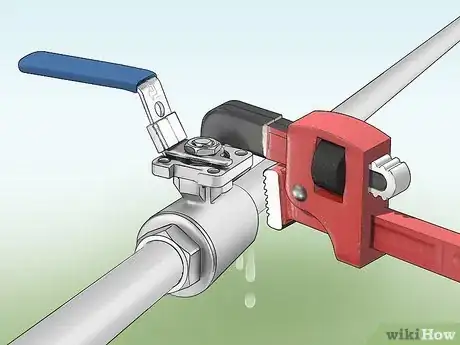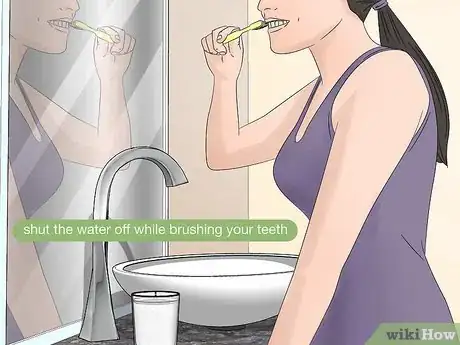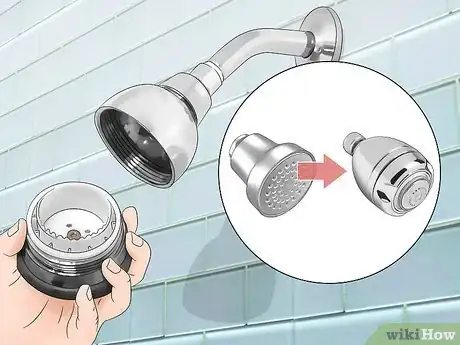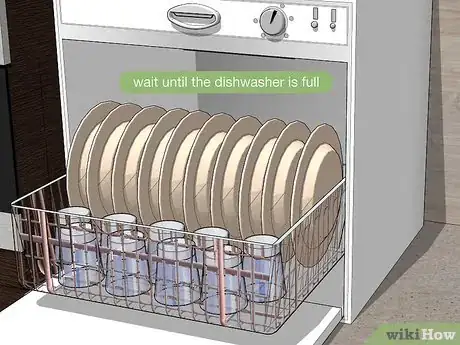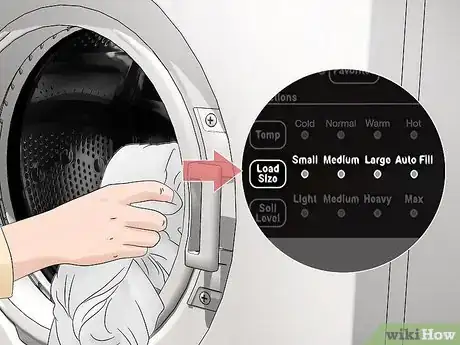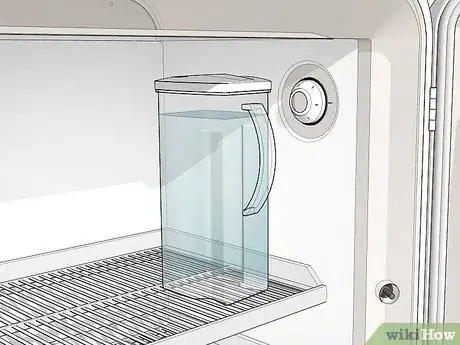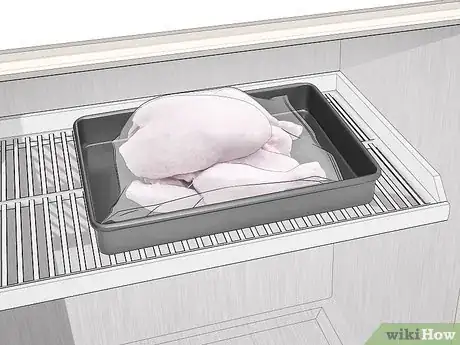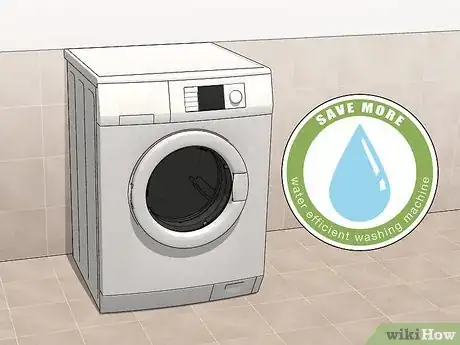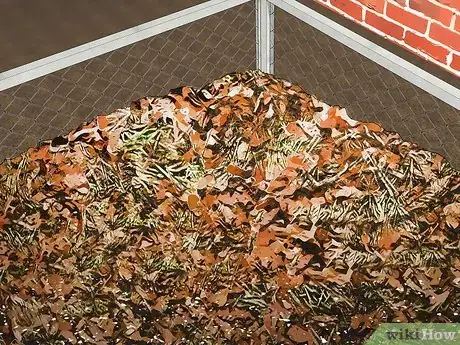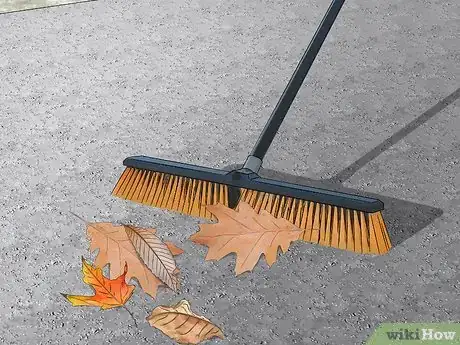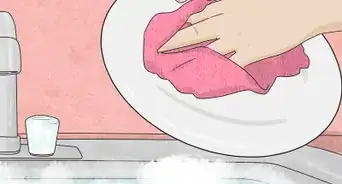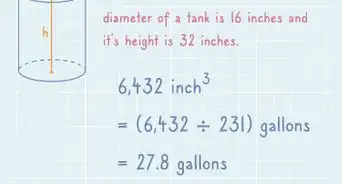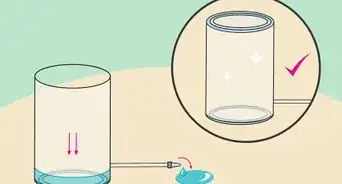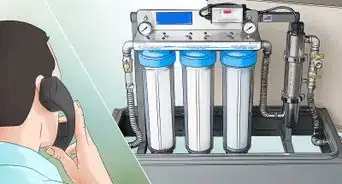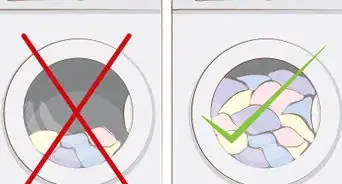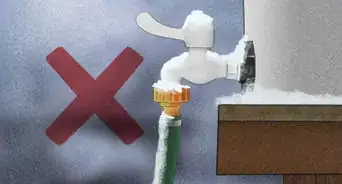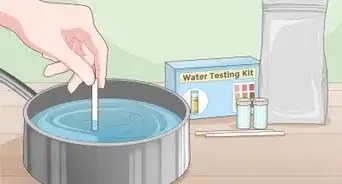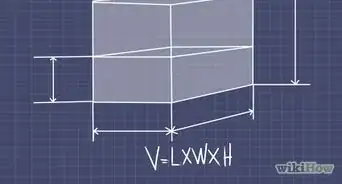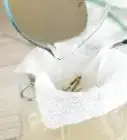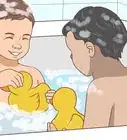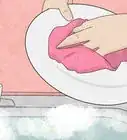This article was co-authored by Kathryn Kellogg and by wikiHow staff writer, Eric McClure. Kathryn Kellogg is the founder of goingzerowaste.com, a lifestyle website dedicated to breaking eco-friendly living down into a simple step-by-step process with lots of positivity and love. She's the author of 101 Ways to Go Zero Waste and spokesperson for plastic-free living for National Geographic.
There are 33 references cited in this article, which can be found at the bottom of the page.
wikiHow marks an article as reader-approved once it receives enough positive feedback. This article has 31 testimonials from our readers, earning it our reader-approved status.
This article has been viewed 2,103,921 times.
If you can cut back on the amount of water you use every day, you’ll be doing the planet a big favor. Using water efficiently helps to preserve the environment, minimize the impact of droughts, and take some pressure off of the public water supply. You’re also keeping some money in your pocket by cutting down on your utility costs. Saving water doesn’t require major lifestyle changes either—changing a few small habits can go a long way towards making the world a better place!
Steps
Expert Q&A
-
QuestionHow can I reduce my water use when showering?
 Kathryn KelloggKathryn Kellogg is the founder of goingzerowaste.com, a lifestyle website dedicated to breaking eco-friendly living down into a simple step-by-step process with lots of positivity and love. She's the author of 101 Ways to Go Zero Waste and spokesperson for plastic-free living for National Geographic.
Kathryn KelloggKathryn Kellogg is the founder of goingzerowaste.com, a lifestyle website dedicated to breaking eco-friendly living down into a simple step-by-step process with lots of positivity and love. She's the author of 101 Ways to Go Zero Waste and spokesperson for plastic-free living for National Geographic.
Sustainability Specialist One of my best tips is to simply change out your showerhead to a low-flow showerhead. It's very easy to do. If you rent, change out the showerhead when you move in and change it back before you move out.
One of my best tips is to simply change out your showerhead to a low-flow showerhead. It's very easy to do. If you rent, change out the showerhead when you move in and change it back before you move out. -
QuestionWhy do people use things that have a very negative effect on the water level?
 Community AnswerIt is because human beings believe themselves to be primary managers of the planet and think they can solve everything with technology after making a mess. Sadly, this is somewhat of a superiority complex that has landed the human species in hot water but it doesn't stop people who just don't care, who are rather selfish and who think a techno-fix is always just around the corner from wasting precious planetary resources. Help those who don't get it to understand that every drop that is saved counts.
Community AnswerIt is because human beings believe themselves to be primary managers of the planet and think they can solve everything with technology after making a mess. Sadly, this is somewhat of a superiority complex that has landed the human species in hot water but it doesn't stop people who just don't care, who are rather selfish and who think a techno-fix is always just around the corner from wasting precious planetary resources. Help those who don't get it to understand that every drop that is saved counts. -
QuestionIs water the most important thing in life?
 Community AnswerAlong with food and some other natural resources, yes. Water is one of the most important things in life. It's necessary for our survival.
Community AnswerAlong with food and some other natural resources, yes. Water is one of the most important things in life. It's necessary for our survival.
References
- ↑ https://www.epa.gov/watersense/fix-leak-week
- ↑ Kathryn Kellogg. Sustainability Specialist. Expert Interview. 28 June 2019.
- ↑ https://www.epa.gov/watersense/fix-leak-week
- ↑ https://www.epa.gov/watersense/about-watersense
- ↑ https://www.usgs.gov/special-topic/water-science-school/science/water-qa-how-much-water-do-i-use-home-each-day?qt-science_center_objects=0#qt-science_center_objects
- ↑ https://www.epa.gov/watersense/fix-leak-week
- ↑ https://sustainability.ncsu.edu/blog/changeyourstate/6-times-you-should-turn-off-the-tap-to-save-water/
- ↑ https://blog.epa.gov/2014/04/23/earth-month-tip-turn-off-the-tap/
- ↑ https://friendsoftheearth.uk/natural-resources/13-best-ways-save-water-stop-climate-breakdown
- ↑ https://www.home-water-works.org/indoor-use/showers
- ↑ Kathryn Kellogg. Sustainability Specialist. Expert Interview. 28 June 2019.
- ↑ https://sustainability.ncsu.edu/blog/changeyourstate/6-times-you-should-turn-off-the-tap-to-save-water/
- ↑ http://monroe.cce.cornell.edu/resources/20-ways-to-save-water
- ↑ http://monroe.cce.cornell.edu/resources/20-ways-to-save-water
- ↑ https://www.home-water-works.org/indoor-use/toilets
- ↑ https://www.volusia.org/services/growth-and-resource-management/environmental-management/natural-resources/water-conservation/25-ways-to-save-water.stml
- ↑ https://www.ncsl.org/research/environment-and-natural-resources/water-efficient-plumbing-fixtures635433474.aspx
- ↑ https://www.energy.gov/energysaver/articles/conserving-water-one-drop-time
- ↑ Kathryn Kellogg. Sustainability Specialist. Expert Interview. 28 June 2019.
- ↑ http://monroe.cce.cornell.edu/resources/20-ways-to-save-water
- ↑ https://www.needhamma.gov/312/Water-Conservation-Tips
- ↑ https://www.home-water-works.org/indoor-use/dishwasher
- ↑ https://wateruseitwisely.com/100-ways-to-conserve/?view=list
- ↑ https://www.energy.gov/energysaver/articles/conserving-water-one-drop-time
- ↑ https://www.energy.gov/energysaver/articles/conserving-water-one-drop-time
- ↑ https://wateruseitwisely.com/100-ways-to-conserve/?view=list
- ↑ https://www.consumerreports.org/washing-machines/yes-your-washing-machine-is-using-enough-water/
- ↑ https://blogs.rochester.edu/thegreendandelion/2010/08/keep-water-in-your-refrigerator-save-water-and-energy/
- ↑ https://sustainability.ncsu.edu/blog/changeyourstate/6-times-you-should-turn-off-the-tap-to-save-water/
- ↑ http://www.thisland.illinois.edu/57ways/57ways_57.html
- ↑ https://sustainability.ncsu.edu/blog/changeyourstate/6-times-you-should-turn-off-the-tap-to-save-water/
- ↑ https://www.epa.gov/watersense/watersense-products
- ↑ https://www.eesi.org/papers/view/fact-sheet-energy-efficiency-standards-for-appliances-lighting-and-equipmen
- ↑ https://www.epa.gov/watersense/about-watersense
- ↑ https://www.nytimes.com/wirecutter/blog/should-you-get-a-front-or-top-load-washing-machine/
- ↑ https://www.energystar.gov/products/appliances
- ↑ https://www.theguardian.com/lifeandstyle/2014/aug/22/six-ways-to-save-water-in-your-garden
- ↑ https://www.asla.org/watersavingtips.aspx
- ↑ https://ag.umass.edu/landscape/fact-sheets/landscaping-to-conserve-water
- ↑ https://www3.epa.gov/region1/eco/drinkwater/water_conservation_residents.html
- ↑ https://www.theguardian.com/lifeandstyle/2014/aug/22/six-ways-to-save-water-in-your-garden
- ↑ Kathryn Kellogg. Sustainability Specialist. Expert Interview. 28 June 2019.
- ↑ https://ucanr.edu/blogs/blogcore/postdetail.cfm?postnum=16800
- ↑ https://wateruseitwisely.com/100-ways-to-conserve/?view=list
- ↑ http://www.seattle.gov/utilities/protecting-our-environment/sustainability-tips/landscaping/for-residents/compost-and-soil/backyard-composting/food-waste
- ↑ http://www.seattle.gov/utilities/protecting-our-environment/sustainability-tips/landscaping/for-residents/compost-and-soil/backyard-composting/food-waste
- ↑ https://www3.epa.gov/region1/eco/drinkwater/water_conservation_residents.html
- ↑ https://www3.epa.gov/region1/eco/drinkwater/water_conservation_residents.html
- ↑ https://extension.colostate.edu/topic-areas/family-home-consumer/water-conservation-in-and-around-the-home-9-952/
- ↑ https://www.austintexas.gov/page/save-water-vehicles-surfaces
- ↑ http://savetexaswater.tamu.edu/
- ↑ https://ag.umass.edu/landscape/fact-sheets/indoor-outdoor-residential-water-conservation-checklist
About This Article
If you want to save water, turn the faucet off while you’re brushing your teeth or shaving instead of letting it run the whole time. You can install a water-saving shower head to help you use less water in the shower without losing water pressure. When you’re doing dishes, load your dishwasher to its full capacity before you turn it on to cut down on how many times you have to run it. You can also install a water meter to help you monitor your usage. Read on for tips on cutting down on the water you use while doing laundry!
